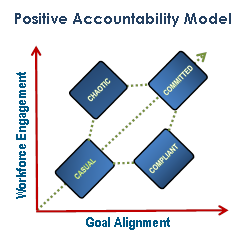How to Build a Culture of Caring for Customers
Call them “customers.” Call them “clients.” Whatever you call them, like most of us, you’re probably leading a business that caters to some type of end consumer. The question is, how engaged is your organization with this audience of purchasers or patrons, those ultimately voting with their loyalty and their dollars? According to a recent TimeTrade™ consumer survey, 90% of consumers don’t get the help they need when shopping from retailers. What’s more, when retailers connect promptly with indecisive shoppers, have a genuine understanding of shopper needs, and share valuable expertise, they find 90% of consumers will buy. So, too, did MAP find that our “knowledge” is a top driver for why people continue to do business with us, according to a recent client survey. Going deeper, demonstrating knowledge—in a prompt, understanding, and solution-centric way—is all about consistently showing clients you really care, a habit discussed in our new book, The Disciplined Leader. Caring about customers is vital to business survivability today, and it’s a value that’s best initiated and sustained when leaders consistently model and reinforce that value with their own people first.
A culture of caring for customers and/or clients starts with you, the leader. It then cascades down and out throughout your team(s) and the entire organization. Here are three action steps to support this in your business:1. Set the example.
Model the behaviors and approach you want to see. Treat everyone from your core team to those front-line employees with respect and practice effective, courteous communication with them as well as with customers with whom you may have interaction. Also, always have a working knowledge of what you’re asking your people to do. This know-how will help ensure that you’re remaining in touch with your business and its people. You’ll be able to address customer-service questions and concerns more promptly and accurately. It will also help you “walk your talk” and prevent that feeling that you need to fake it when engaging with your employees on the topic of caring for customers or clients.
2. Create accountability, establish expectations.
If your goal is to ensure customers feel cared for and valued, take it seriously by developing expectations and accountability around a culture of strong customer service. As with other expectations and areas of accountability, build in measures, track performance, and be prepared to take corrective action when you discover opportunities to change and improve. Watch out for cost-cutting measures that may impact quality of service, too. Such efforts can be shortsighted in the long run, particularly if customers feel shortchanged and their loyalty gets lost.3. Reward your achievers.
People are typically more motivated when they get recognized and rewarded for success and achievement. Although the way you drive this motivation may vary from employee to employee, find ways to acknowledge people who play a role in supporting and sustaining that culture of caring for customers. It could be something as small, yet significant as mentioning a frontline employee who met a monthly accountability metric to giving a restaurant gift card to another who often and cheerfully stays late on the job to address complex customer issues.
What are some great examples of customer service metrics that can demonstrate an organization’s culture of caring?



